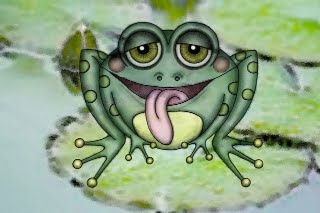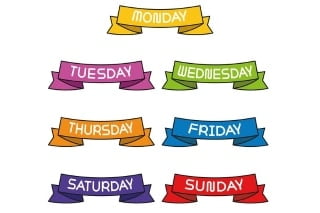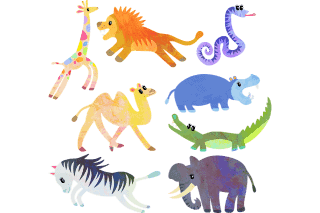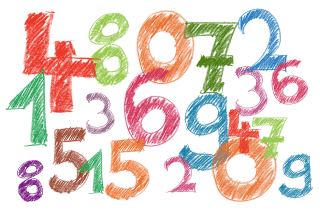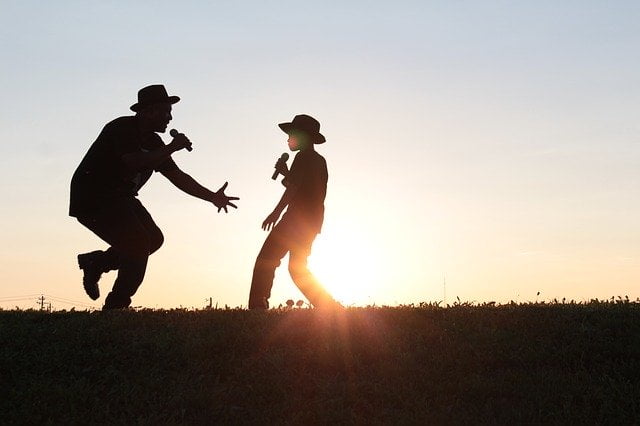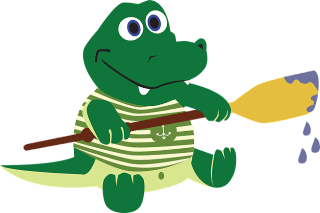

Ding Dong Bell
“Ding Dong Bell”, also known as “Ding Dong Dell” is a traditional rhyme that was published first time in 1580. It is a popular nursery rhyme with an educational theme against animal cruelty. Be aware that this rhyme lyrics can be a little scary to many children, so explain to the kids that they never must do such things to animals in real life.
The phrase ‘Ding, dong, bell’ also appears several times in plays by Shakespeare. However, it could actually have been written by the playwright as instructions for sound effects. The earliest version to resemble the modern one is from Mother Goose’s Melody published in London around 1765.
The additional lines that include (arguably) the more acceptable ending for children with the survival of the cat are in James Orchard Halliwell’s Nursery Rhymes of England, where the cat is pulled out by “Dog stout“.
The Ding Dong Bell rhyme tells the story of a cat who is stuck in a well and a little mouse who comes to her rescue. The rhyme has a humorous tone and is designed to entertain and engage young children. However, it also has a darker side, as it suggests that the cat was drowned by a naughty boy named Little Johnny Thin. This aspect of the rhyme has led some to speculate that it may have been used as a cautionary tale to warn children about the dangers of cruelty to animals.
“Ding Dong Bell” Lyrics
Ding, dong, bell,
Pussy’s in the well.
Who put her in?
Little Johnny Flynn.
Who pulled her out?
Little Tommy Stout.
What a naughty boy was that,
To try to drown poor pussy cat,
Who never did him any harm,
But ate all of the mice in the farmer’s barn.
- bell rhyming words
- ding ding dong
- ding dong poem
- ding song
- lyrics ding dong
- rhymes with bell
- rhymes with well
- words that rhyme with bell
Frequently asked questions (FAQ's) based on “Ding Dong Bell”
Answer : Shakespeare uses the phrase in the Tempest – Act I, Scene II: “Sea nymphs hourly ring his knell: Hark! Now I hear them – Ding, dong, bell.” The lyrics were used to encourage a child to understand that it was unacceptable and cruel to harm any animal that had done no harm.
Answer : This rhyme was written in English language.
Answer : This rhyme was firstly published in 1580.
Answer : “Ding Dong Bell” also known as “Ding Dong Dell”.
Answer : A naughty little boy Jonny Flynn put the Pussy cat in the well.
Answer : Jonnu Flynn was naughty boy who like to troubling everyone.
Answer : Pussy cat ate all of the mice in the farmer’s barn.
Answer : The moral of the rhyme for the little children, that we should never try to harm other living being for fun.
- ding dong meaning in English
- ding dong bell nursery rhyme lyrics
- poem ding dong bell lyrics
- bell rhyming words
- ding dong bell poem lyrics in english
- ding dong bell song with action
- ding dong bell rhymes in English
- words that rhyme with bell
Some more details based on “Ding Dong Bell”
“Ding Dong Bell” is a traditional English nursery rhyme that has been passed down through generations of families and is still popular today. The rhyme tells the story of a mischievous cat and a little mouse, and is often accompanied by hand gestures and actions.
The rhyme is believed to have originated in the 16th or 17th century in England, and has been adapted and recorded in various forms, including as a song and a fingerplay. The hand gestures and actions associated with the rhyme involve mimicking the movements of the cat and the mouse, and are often used to engage young children and help them develop their cognitive and motor skills.
Despite its potentially dark undertones, Ding Dong Bell rhyme remains a beloved and popular nursery rhyme that has been enjoyed by generations of children. Its catchy tune, engaging story, and hand gestures and actions make it a fun and entertaining way to engage young children and help them develop their cognitive and motor skills.
- bell rhyming words
- ding ding dong
- ding dong poem
- ding song
- lyrics ding dong
- rhymes with bell
- rhymes with well
- words that rhyme with bell
Some activities for children's based on "Ding Dong Bell"
- Bell Symphony: Provide the children with a variety of bells, such as handbells, jingle bells, and cowbells, and have them experiment with creating a bell symphony. Encourage them to listen to each other and work together to create a harmonious sound.
Note: This activity promotes creativity and teamwork. It also helps children understand the concept of sound and musical instruments.
2. Bell Art: Provide the children with materials such as paint, paper, and bells, and have them create artwork incorporating bells. Encourage them to use their imaginations and creativity to decorate the bells and use them in their artwork.
Note: This activity promotes creativity and fine motor skills. It also introduces children to the concept of sound and musical instruments.
- Bell Matching Game: Create a matching game using pictures of bells. Have the children match the pictures to their corresponding bells and make the sound of each bell as they find the matches.
Note: This activity promotes visual recognition and memory retention. It also introduces children to different types of bells and the sounds they make.
Related links
Categories
Other popular rhymes
Other related keywords and search's
- ding dong bell meaning
- bell rhyming words
- ding dong bell nursery rhyme lyrics
- ding dong bell push in the well
- ding dong bell rhyme with action
- nursery rhymes ding dong bell
- ding dong bell kitties in the well lyrics
- ding dong bell poem lyrics in english
- ding dong bell poem in written
- ding dong bell song lyrics
- ding dong bell song please
- ding dong bell song words
- ding ding dong
- ding dong poem
- ding song
- lyrics ding dong
- rhymes with bell
- rhymes with well
- words that rhyme with bell






